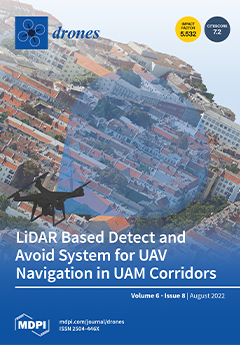Open AccessEditor’s ChoiceArticle
Energy Efficient Transmission Design for NOMA Backscatter-Aided UAV Networks with Imperfect CSI
by
Saad AlJubayrin, Fahd N. Al-Wesabi, Hadeel Alsolai, Mesfer Al Duhayyim, Mohamed K. Nour, Wali Ullah Khan, Asad Mahmood, Khaled Rabie and Thokozani Shongwe
Cited by 12 | Viewed by 2813
Abstract
The recent combination of ambient backscatter communication (ABC) with non-orthogonal multiple access (NOMA) has shown great potential for connecting large-scale Internet of Things (IoT) in future unmanned aerial vehicle (UAV) networks. The basic idea of ABC is to provide battery-free transmission by harvesting
[...] Read more.
The recent combination of ambient backscatter communication (ABC) with non-orthogonal multiple access (NOMA) has shown great potential for connecting large-scale Internet of Things (IoT) in future unmanned aerial vehicle (UAV) networks. The basic idea of ABC is to provide battery-free transmission by harvesting the energy of existing RF signals of WiFi, TV towers, and cellular base stations/UAV. ABC uses smart sensor tags to modulate and reflect data among wireless devices. On the other side, NOMA makes possible the communication of more than one IoT on the same frequency. In this work, we provide an energy efficient transmission design ABC-aided UAV network using NOMA. This work aims to optimize the power consumption of a UAV system while ensuring the minimum data rate of IoT. Specifically, the transmit power of UAVs and the reflection coefficient of the ABC system are simultaneously optimized under the assumption of imperfect channel state information (CSI). Due to co-channel interference among UAVs, imperfect CSI, and NOMA interference, the joint optimization problem is formulated as non-convex, which involves high complexity and makes it hard to obtain the optimal solution. Thus, it is first transformed and then solved by a sub-gradient method with low complexity. In addition, a conventional NOMA UAV framework is also studied for comparison without involving ABC. Numerical results demonstrate the benefits of using ABC in a NOMA UAV network compared to the conventional UAV framework.
Full article
►▼
Show Figures





